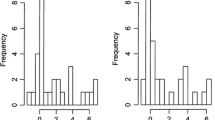Summary
Factors governing the entry of new drugs into clinical practice are changing, with increasing emphasis on economic issues. In future, organisations that subsidise the use of Pharmaceuticals are likely to require sponsors to provide evidence of the cost-effectiveness of their products. The first national government to signal such an intention is the Commonwealth Government of Australia, which from January 1993 will require economic analyses in support of applications for listing of new pharmaceutical products on its schedule of pharmaceutical benefits. This move is underpinned by legislation that requires the country’s Pharmaceutical Benefits Advisory Committee (PBAC) to consider costs and effectiveness when recommending listing of new drugs. The approach that has been recommended to the Committee is based on advice from a group of consultants, health economists and clinicians. The PBAC will use economic analyses as an aid to decision-making that will remain within a clinical framework; the viewpoint will be societal, and analyses will include costs that fall outside the pharmaceutical benefits scheme. The preferred approach is comparative cost-effectiveness analysis with a particular emphasis on the marginal costs of obtaining additional health benefits with new drugs, compared with existing therapies. The use of analyses that are restricted to potential cost savings with new drugs is discouraged, as is the inclusion of indirect costs and benefits. To facilitate the conduct of economic analyses, it is planned to hold meetings with specialist clinicians to obtain consensus on a range of intermediate clinical outcome indicators, and to publish lists of ‘standard’ Australian costs that will be updated regularly. The approach being followed in Australia has implications for both the government and the pharmaceutical industry. The responsibility for monitoring the effects of this new policy lie with the government. The success, or otherwise, of the policy should not be gauged simply by the effects on the price of new drugs which, historically, have been relatively low in Australia. A full evaluation will require that more effort be put into clinical outcomes research and the development of population databases, an area in which Australia lags behind other countries.
Similar content being viewed by others
References
Anderson GM, Spitzer WO, Weinstein MC, Wang E, Blackburn JL, et al. Benefits, risks and costs of prescription drugs: a scientific basis for evaluating policy options. Clinical Pharmacology and Therapeutics 48: 111–119, 1990
Baume P. Of ends and means. Medical Journal of Australia 155: 142–144, 1991
Baume P. A question of balance: report on the future of drug evaluation in Australia. Commonwealth of Australia, Canberra, 1991b
Bloom B, Jacobs J. Cost effects of restricting cost effective therapy. Medical Care 23: 872–880, 1985
Commonwealth of Australia. Draft guidelines for the pharmaceutical industry on preparation of submissions to the Pharmaceutical Benefits Committee, including submissions involving economic analyses. Department of Health, Housing and Community Services, Canberra, 1990
Drummond MF. Economic evaluation and the rational diffusion and use of health technology. Health Policy 7: 309–324, 1987
Drummond MF. Allocating resources. International Journal of Technology Assessment in Health Care 6: 77–92, 1990
Drummond MF. Australian guidelines for cost-effectiveness analysis of Pharmaceuticals: the thin end of the boomerang? Centre for Health Economics, Discussion Paper 88, Centre for Health Economics, University of York, 1991
Drummond MF, Crump B, Hawhes R, Marchant M. General practice fundholding. British Medical Journal 301: 1288–1289, 1990
Drummond MF, Stoddart GL, Torrance GW. Methods for the economic evaluation of health care programmes. Oxford University Press, Oxford 1987
Editorial. Single market — protecting health, promoting industry. SCRIP 1610: 6, 1991a
Editorial. Australia must co-operate internationally. SCRIP 1636: 20, 1991b
Eisenberg JM. Clinical economics. a guide to the economic analysis of clinical practices. Journal of the American Medical Association 262: 2879–2885, 1989
Evans D, Freund D, Dittus R, Robertson J, Henry D. The use of economic analysis as a basis for inclusion of pharmaceutical products on the Pharmaceutical Benefits Scheme. Department of Health Housing and Community Services, Commonwealth of Australia, Canberra, 1990
Hall R. Drug regulation in Australia. Medical Journal of Australia 151: 338–340, 1989
Henry DA, Evans DB, Robertson J. The safety and cost-effectiveness of low osmolar contrast media: can economic analysis determine the real worth of a new technology? Medical Journal of Australia 154: 766–772, 1991
Hillman AL, Eisenberg JM, Pauly MV, Bloom BS, Glick H, et al. Avoiding bias in the conduct and reporting of cost-effectiveness research sponsored by pharmaceutical companies. New England Journal of Medicine 324: 1362–1365, 1991
Mitchell A, Henry D. Potential for bias in economic analyses. New England Journal of Medicine 325: 1384, 1991
Rawlins MD, Jefferys DB. Study of United Kingdom product licence applications containing new active substances 1987–1989. British Medical Journal 302: 223–225, 1991
Schedule of Pharmaceutical Benefits for medical practitioners. Department of Health, Housing and Community Services, Commonwealth of Australia, Canberra, August 1991
Schulman KA, Kinosian B, Jacobson TA, Glick H, William K, et al. Reducing high blood cholesterol level with drugs: cost-effectiveness of pharmacologic management. Journal of the American Medical Association 264: 3025–3033, 1990
Schwartz WB, Mendelson DN. Cost saving due to lower utilization. New England Journal of Medicine 325: 739, 1991
Soumerai SB, Avorn J, Ross-Degnan D, Gortmaker S. Payment restrictions for prescription drugs under Medicaid: effects on therapy cost and equity. New England Journal of Medicine 317: 550–556, 1987
Soumerai SB, McLaughlin TJ, Avorn J. Improving drug prescribing in primary care: a critical analysis of the experimental literature. Milbank Quarterly 67: 268–317, 1989
Author information
Authors and Affiliations
Additional information
Dr David Henry was a member of a group of consultants to the Australian government who drew up draft guidelines for the introduction of economic analysis as an aid to subsidisation decisions for Pharmaceuticals. The views expressed in this article do not necessarily reflect the opinions of the other consultants or the Australian government.
Rights and permissions
About this article
Cite this article
Henry, D. Economic Analysis as an Aid to Subsidisation Decisions. Pharmacoeconomics 1, 54–67 (1992). https://doi.org/10.2165/00019053-199201010-00010
Published:
Issue Date:
DOI: https://doi.org/10.2165/00019053-199201010-00010



